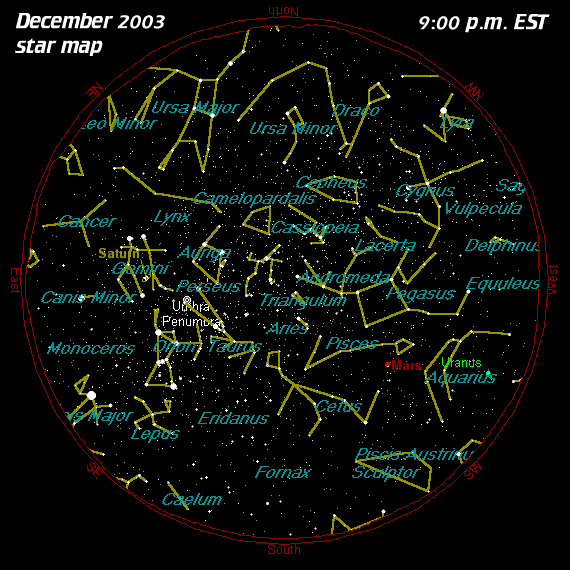



![[Moon Phases]](../moonphases/2003-12-phases.jpg) |
|---|
![[Winter Portrait of Venus]](12-07-03-venus.jpg) |
|---|
| Venus as it appeared on Sunday, December 7, 2003 under a nearly full moon. Gary A. Becker digital photography... |
![[Mercury and Venus]](12-12-03-venus-mercury.jpg) |
|---|
| Venus and Mercury can be seen in this late fall portrait. Mercury can is visible left of center just above the treeline in this digital photo taken on December 12, 2003 by Gary A. Becker. |
![[The Moon and Trinity]](12-03-santas-stars.jpg) |
|---|
| A Holiday Program has been an ASD Planetarium tradition since its founding in 1965. Composite digital photography by Gary A. Becker... |
![[Saturn at Opposition]](12-03-saturn.gif) |
|---|
 |
